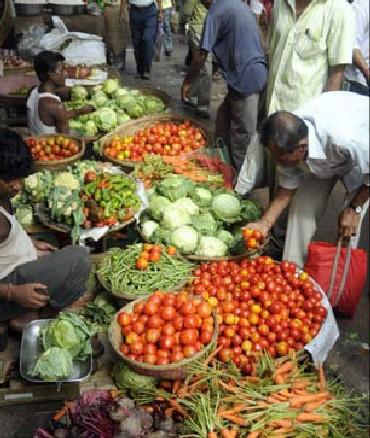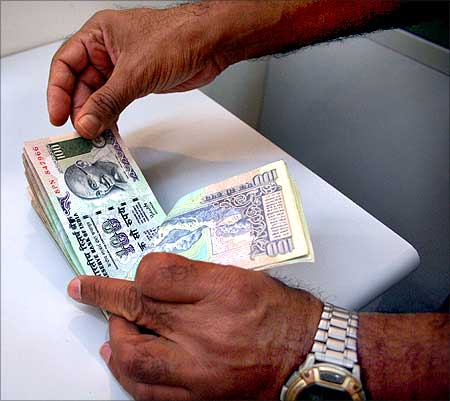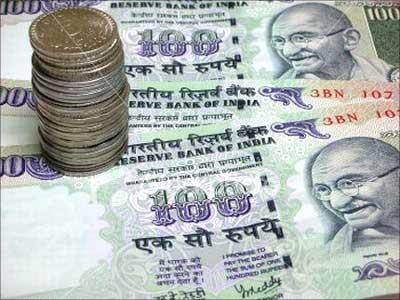 | « Back to article | Print this article |
Food inflation declines sharply to 6.60%
Food inflation fell sharply to 6.60 per cent for the week ended November 26, reflecting a decline in prices of essential items like vegetables, onions, potatoes and wheat.
Food inflation, as measured by the Wholesale Price Index, stood at 8 per cent in the previous week ended November 19.
It was recorded at 8.93 per cent in the corresponding period last year.
According to data released by the government on Thursday, onions became cheaper by 39.20 per cent year-on-year during the week under review, while potato prices were down by 15.75 per cent.
Prices of wheat also fell by 4.70 per cent.
Click NEXT to read further. . .
Food inflation declines sharply to 6.60%
Overall, vegetables became cheaper by 1.25 per cent, a big relief after double-digit inflation in vegetable prices during the months of September and October.
However, other food products grew more expensive on an annual basis, led by protein-based items.
Pulses became 13 per cent costlier during the week under review, while milk grew dearer by 11.02 per cent and eggs, meat and fish by 10.04 per cent.
Fruits also became 10.72 per cent more expensive on an annual basis, while cereal prices were up by 1.68 per cent.
Click NEXT to read further. . .
Food inflation declines sharply to 6.60%
Inflation in the overall primary articles category stood at 6.92 per cent during the week ended November 26, as against 7.74 per cent in the previous week.
Primary articles have over 20 per cent weight in the wholesale price index.
Inflation in the non-food segment, which includes fibres, oilseeds and minerals, was recorded at 1.37 per cent during the week under review, as against 2.14 per cent in the week ended November 19.
The rate of price rise in non-food primary articles has fallen sharply during the past couple of months, from over 8 per cent to around 1 per cent, as per the latest numbers.
Click NEXT to read further. . .
Food inflation declines sharply to 6.60%
Fuel and power inflation stood at 15.53 per cent during the week ended November 26, the same as in the previous week.
The decline in the rate of price rise in food items is likely to bring some relief to the government and the Reserve Bank of India, which have been facing flak from all quarters for persistently high prices.
Speaking in the Lok Sabha on Wednesday, Finance Minister Pranab Mukherjee said the ideal rate of inflation is around 5-6 per cent.
The fall in food inflation comes as a silver lining for the government at a time when the economy is experiencing a slowdown, with gross domestic product growth dipping to 6.9 per cent in the second quarter, the lowest rate of expansion in over two years.
Click NEXT to read further. . .
Food inflation declines sharply to 6.60%
The eight key infrastructure industries witnessed dismal growth of 0.1 per cent in October, the lowest in the past five years.
Headline inflation, which also factors in manufactured items, has been above the 9 per cent-mark since December, 2010.
It stood at 9.73 per cent in October this year.
The RBI has hiked interest rates 13 times since March, 2010, to tame demand and curb inflation.
In its second quarterly review of the monetary policy last month, the central bank had said it expects inflation to remain elevated till December on account of the demand-supply mismatch before moderating to 7 per cent by March, 2012.




